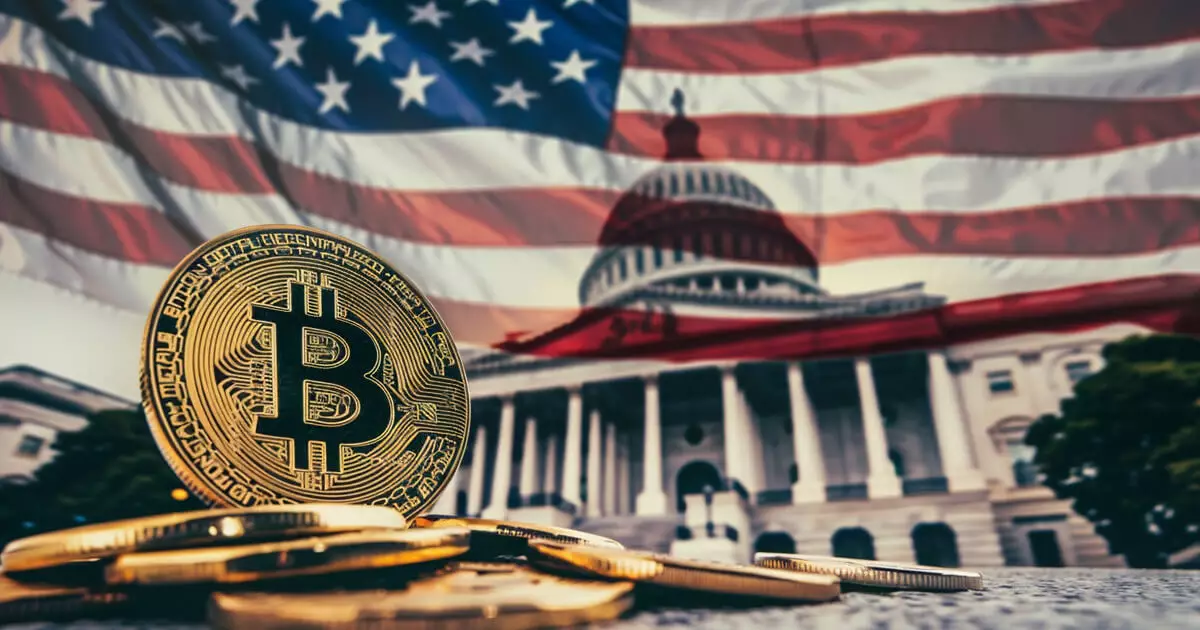The cryptocurrency sector has long navigated a maze of regulatory challenges, but recent developments signal a potential shift towards clearer governance. As the Biden administration focuses on constructing a comprehensive legal framework around digital assets, policymakers are emphasizing the significance of regulated environments to harness innovation while mitigating risks. The formation of a dedicated crypto working group under the leadership of figures like David Sacks marks a pivotal moment in the path toward establishing robust guidelines that could redefine the cryptocurrency landscape in the United States.
Evaluating Bitcoin Reserves and Sovereign Wealth Holdings
A central topic of discussion revolves around the possibility of the U.S. government creating a Bitcoin reserve. This idea, initially put forth by the White House’s crypto working group, highlights a strategic urgency to integrate Bitcoin into national economic policy. Sacks, however, has clarified that the notion of the U.S. sovereign wealth fund purchasing Bitcoin will be considered distinctly. This indicates an awareness of Bitcoin’s dual role as both an asset and a speculative investment, requiring careful analysis before embarking on governmental investments in cryptocurrencies.
Sacks firmly noted the necessity for a regulatory environment that fosters clarity, differentiating between compliant entities and those engaging in fraud. This approach could stem from the recognition that prior laissez-faire conditions permitted many innovative projects to migrate overseas due to stifling uncertainty in U.S. regulatory frameworks. The Trump administration, as articulated by Sacks, aims to reverse this trend through structured regulations.
Among the top priorities of the crypto working group is the formulation of stablecoin legislation. Stablecoins are garnering attention not only because of their potential to support the U.S. dollar’s status as the world’s reserve currency, but also due to their implications for everyday transactions in the evolving digital economy. Anchoring the agenda for regulation is the recently proposed “Clarity for Payment Stablecoins Act of 2024,” presented by Senator Bill Hagerty, which strives to lay down an unequivocal binding framework for stablecoins.
The proposed bill delineates specific parameters governing the issuance and management of payment stablecoins. By requiring that these assets maintain a 1:1 reserve backing using U.S. currencies and solid assets, it aims to instill confidence among investors and consumers. This legislative effort underscores the necessity of applying traditional financial scrutiny to the digital realm, ensuring that entities engaged in stablecoin operations are licensed and thus accountable.
Jurisdictional Divisions: SEC vs CFTC
The newly minted regulation also reveals divergences in oversight dimensions among U.S. regulatory bodies. Senators, including Tim Scott and John Boozman, made it clear that the regulatory landscape involves not just the SEC but also the Commodity Futures Trading Commission (CFTC), which governs commodities. This delineation is critical in framing the future of cryptocurrencies, serving as a reminder that not all digital assets fall under the same regulatory jurisdiction.
Boozman’s emphasis on the SEC’s authority over securities points toward an urgent need for clarity on what constitutes a digital asset and how these classifications might influence broader market regulations. This speaks to the ongoing conversation around the necessary alignment of regulatory bodies to foster an environment where innovation can flourish without compromising investor security.
Simultaneously, the Securities and Exchange Commission (SEC) is intensifying its resources by launching a dedicated crypto task force led by Commissioner Hester Peirce, known for her advocacy regarding regulatory fairness and consumer protection in the crypto space. Peirce’s comparison of the SEC’s past regulatory landscape to an erratic road trip highlights the essential need for streamlined governance. The task force’s mission aims not only to establish clearer regulations but also to engage in constructive conversations with industry stakeholders.
The task force will explore fundamental questions regarding the legitimacy of various cryptocurrency classifications and the legal implications thereof. Moreover, it will take a closer look at mechanisms such as crypto lending, staking services, and the complex realm of exchange-traded products. This multifaceted approach could pave the way for a future where digital assets are seamlessly integrated into traditional finance whilst remaining accountable and transparent.
As the dialogue around cryptocurrency regulation unfolds, the stakes have never been higher. The involvement of regulatory bodies, lawmakers, and industry advocates signals a collective effort to forge a balanced approach that fosters innovation while protecting consumers. Clear regulatory standards could ultimately reinforce the position of the U.S. dollar in global finance and establish a competitive edge in the technological revolution characterized by digital currencies. Future developments will undoubtedly impact not only the financial markets but also the broader societal acceptance of cryptocurrencies as a legitimate form of value exchange. The evolution of this regulatory framework is crucial—both for the remarkable potential of blockchain technology and for ensuring the integrity of financial systems as they adapt to this new digital paradigm.
















Leave a Reply